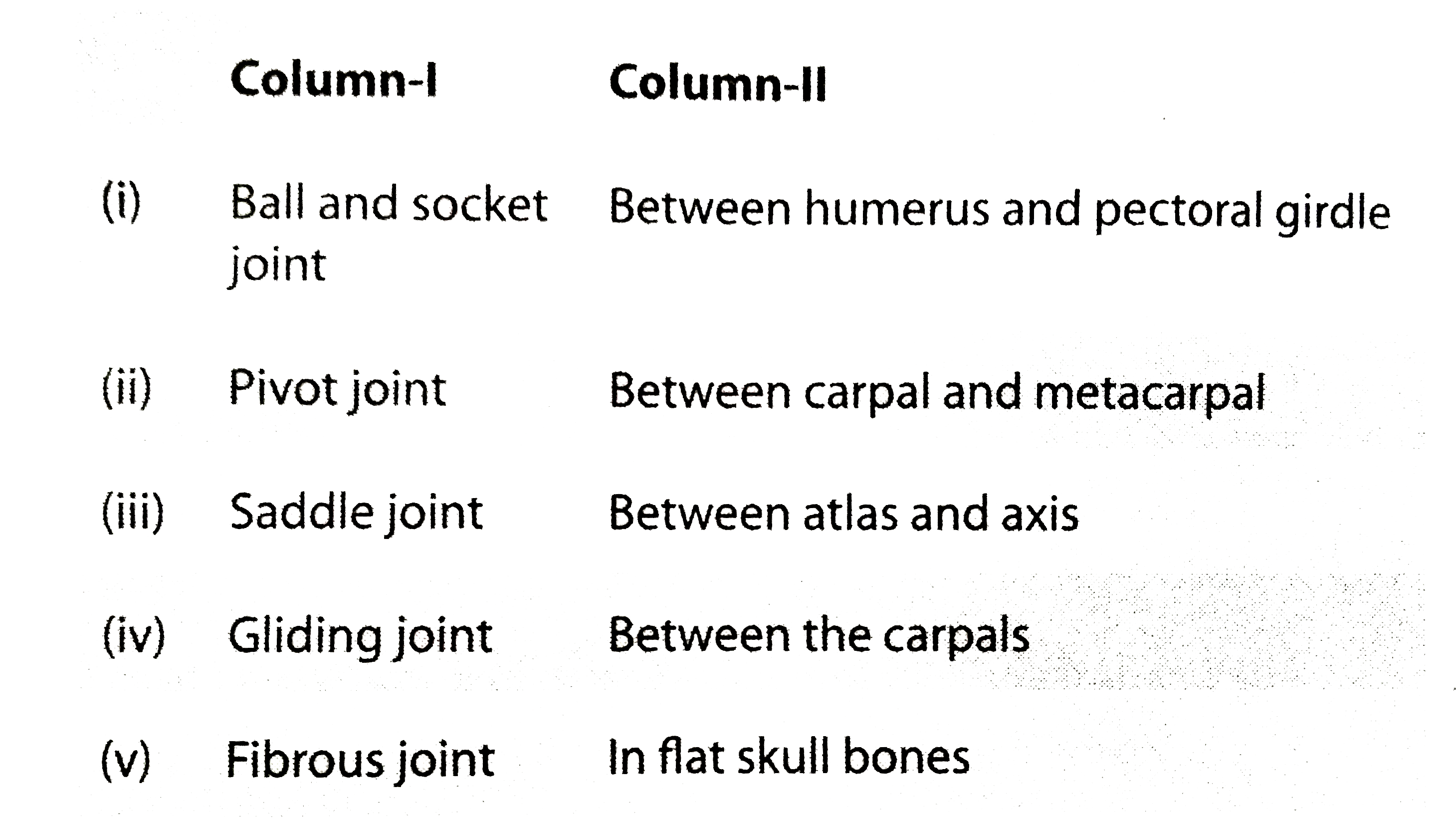The modified supporting roots called prop roots and stilt roos are seen respectively in (i) Banyan and Maize (ii) Banyan and Sugarcane (iii) Maize and Banyan (iv) Sugarcane and Maize
(a) i only
(b) ii only
(c) iii only
(d) i and ii only
i only
ii only
iii only
i and ii only
The correct Answer is:D
To solve the question regarding the modified supporting roots known as prop roots and stilt roots, we need to identify which plants exhibit these root types correctly. Let's break down the options step by step:
1. Understanding Prop Roots and Stilt Roots:
- Prop Roots: These are horizontal branches that grow from the trunk or branches of a tree and help support the plant. They are commonly found in large trees.
- Stilt Roots: These roots develop from the lower part of the stem and grow obliquely into the ground, providing support to the plant. They are typically found in certain grasses and crops.
2. Analyzing the Options:
- Option (i): Banyan and Maize
- Banyan trees have prop roots.
- Maize has stilt roots.
- This option is correct.
- Option (ii): Banyan and Sugarcane
- Banyan trees have prop roots.
- Sugarcane has stilt roots.
- This option is also correct.
- Option (iii): Maize and Banyan
- Maize does not have prop roots; it has stilt roots.
- Banyan trees have prop roots.
- This option is incorrect.
- Option (iv): Sugarcane and Maize
- Both sugarcane and maize have stilt roots.
- This option is incorrect as it does not mention prop roots.
3. Conclusion:
- The correct options that mention the respective plants with prop roots and stilt roots are (i) Banyan and Maize, and (ii) Banyan and Sugarcane. Therefore, the correct answer is:
- (d) i and ii only.
- Prop Roots: These are horizontal branches that grow from the trunk or branches of a tree and help support the plant. They are commonly found in large trees.
- Stilt Roots: These roots develop from the lower part of the stem and grow obliquely into the ground, providing support to the plant. They are typically found in certain grasses and crops.
- Option (i): Banyan and Maize
- Banyan trees have prop roots.
- Maize has stilt roots.
- This option is correct.
- Option (ii): Banyan and Sugarcane
- Banyan trees have prop roots.
- Sugarcane has stilt roots.
- This option is also correct.
- Option (iii): Maize and Banyan
- Maize does not have prop roots; it has stilt roots.
- Banyan trees have prop roots.
- This option is incorrect.
- Option (iv): Sugarcane and Maize
- Both sugarcane and maize have stilt roots.
- This option is incorrect as it does not mention prop roots.
- The correct options that mention the respective plants with prop roots and stilt roots are (i) Banyan and Maize, and (ii) Banyan and Sugarcane. Therefore, the correct answer is:
- (d) i and ii only.
Topper's Solved these Questions
- BOOK - DINESH PUBLICATION ENGLISHCHAPTER - ROOTEXERCISE - REVISION QUSTIONS FROM COMPETITIVE EXAMS.52videos
ROOT
- BOOK - DINESH PUBLICATION ENGLISHCHAPTER - ROOTEXERCISE - Assertion2videos
ROOT
- BOOK - DINESH PUBLICATION ENGLISHCHAPTER - RESPIRATIONEXERCISE - CHECK YOUR GRASP20videos
RESPIRATION
- BOOK - DINESH PUBLICATION ENGLISHCHAPTER - SEEDSEXERCISE - CHECK YOUR GRASP10videos
SEEDS
Similar Questions
Knowledge Check
- Question 1 - Select One
Let a,b,c are in A.P and k≠0 be a real number which of the following is/ are correct?
(i) ka,kb,kc are in A.P
(ii) k−a,k−b,k−c are in A.P.
(iii) ak,bk,ck are in A.P (a) i and ii only (b) ii and iii only (c) i and iii only (d) i, ii and iiiAi and ii onlyBii and iii onlyCI and iii onlyDI,ii and iii
Which of the following is/are not carrectly mathched pairs ?

(a) (ii) and (iii)
(b) (i) and (iv)
(c) (v) only
(d) (ii) onlyView SolutionSelect the characters not applicable to C3 plants
(i) Primary CO2 acceptor is PEP
(ii) The plants have RuBisCO
(iii) Initial carboxylation reaction occurs in bundle sheath cells
(iv) Calvin cycle occurs only in bundle sheath cells
(a) iii and iv only
(b) ii, iii and iv only
(c) i and ii only
(d) i, iii and iv onlyView SolutionDraw a vertical section of a maize grain and label (i) pericarp, (ii)scutellum, (iii)coleoptile, and (iv) radicle
View SolutionNodule formation in leguminous plants occur due to
(i) Cytokinins produced by invading bacteria
(i) Auxins produced by plant cell.
(iii) Auxins produced by invading bacteria.
(iv) Cytokinin produced by plant cell.
(a) (i) and (ii) only
(b) (i) and (iii) only
(c) (iii) and (iv) only
(d) (ii) and (iv) onlyView SolutionAccording to IUCN, some of the extinctions include
(i) Dodo
(ii) Indian gazelle
(iii) Thylacine
(iv) Steller's sea cow
(a) (i), (ii), (iii) and (iv)
(b) (ii) and (iv)
(c) (i),(iii) and (iv)
(d) (iii) and (iv)View SolutionKranz anatomy is not seen in (i) Maize (ii) sorghum (iii) Tomato.
View SolutionThe smallest disease - causing agent is .... and it is made up of ……….
(a) (i) mycoplasma (ii) proteins and nucleic acids
(b) (i) prions, (ii) Proteins only
(c) (i) viroids, (ii) nucleic acids only
(d) (i) viroids, (ii) proteins onlyView Solution

